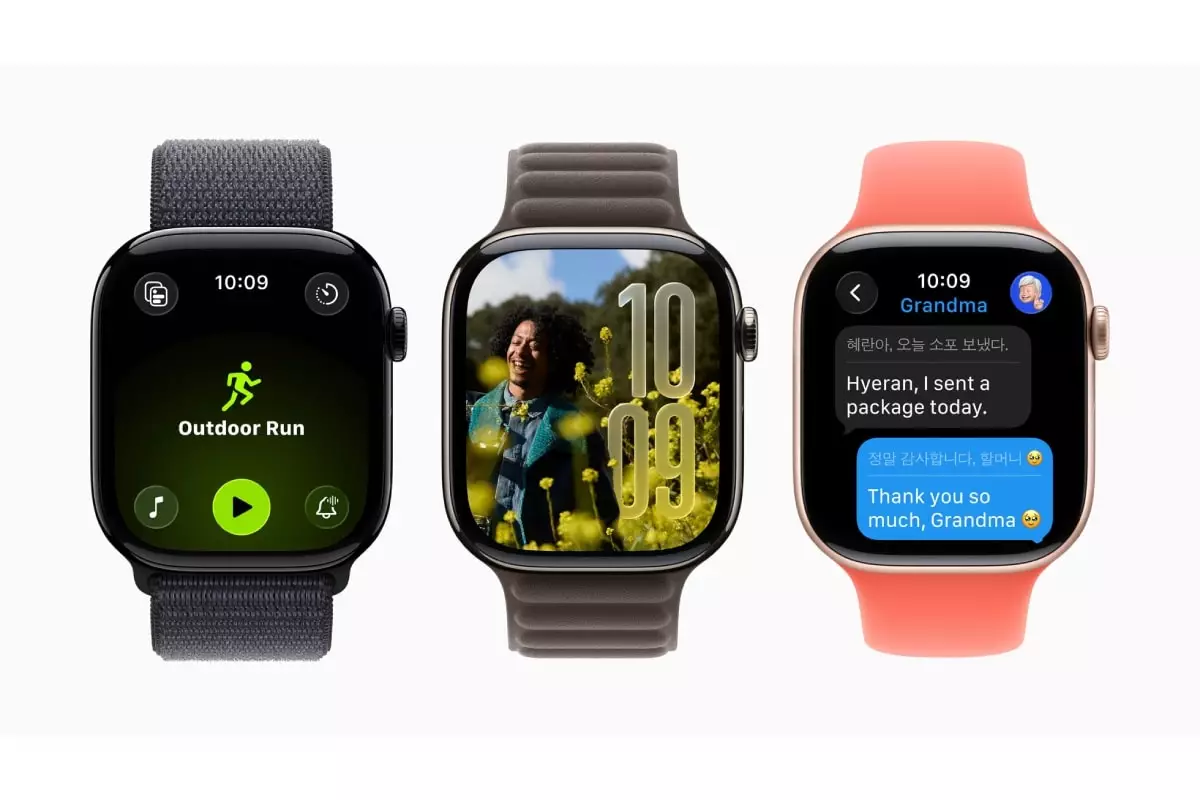Apple’s recent unveiling of watchOS 26 at WWDC 2025 is being touted as the next giant leap in wearable technology. While the announcement is met with mixed excitement and skepticism, the enhancements promised in this update—such as the innovative Liquid Glass design, a revamped Control Centre, and the AI-driven Workout Buddy—signal Apple’s commitment to staying ahead in the wearables space. However, one must question whether these changes are genuinely transformative or merely incremental tweaks in an ever-crowded market.
Liquid Glass: A Design Statement or Mere Aesthetic?
The introduction of the Liquid Glass design aims to set watchOS 26 apart from its predecessors. While sleek and modern, one wonders if this new aesthetic merely serves as a superficial upgrade rather than a genuine improvement in functionality. Yes, the way Smart Stack widgets and notifications adopt this new visual language adds a fresh allure to the experience. Yet, does a breathtaking design compensate for possible shortcomings in usability? It almost feels as if Apple is prioritizing visual appeal over tangible user experience. As consumers, we must question whether the visual flair truly enhances our interaction with the device or simply dazzles the eye at the expense of practical utility.
AI-Powered Workout Buddy: A Double-Edged Sword
The highlight feature of watchOS 26 is undoubtedly the AI-powered Workout Buddy, designed to provide real-time, personalized insights during workouts. Here lies the crux of the matter: while the integration of AI into fitness routines appears to be a step forward, its efficacy hinges on the accuracy of the data gathered and the algorithms employed. Guidance from an AI can be incredibly valuable—if programmed to be genuinely supportive, insightful, and, above all, motivational. However, if this AI merely churns out tired phrases of encouragement without truly understanding the user’s history or current condition, will it lead to user disengagement rather than motivation? The success of this feature will ultimately weigh on the quality of retroactive learning from individual user data.
Smart Stack: An Overlooked Opportunity?
Apple’s insistence that Smart Stack will improve its predictive capabilities is a claim that deserves scrutiny. While it’s fantastic to know that Smart Stack can evolve based on contextual data, one must ponder the potential pitfalls of over-reliance on algorithms. Apple is essentially placing trust in technology to know our habits better than we do—a sentiment that, while innovative, could lead to a dangerous slope of algorithmic dependency. The excitement surrounding these predictions could quickly turn sour if users find themselves bombarded with suggestions that feel irrelevant or intrusive, turning the promise of “smart” interactions into an annoyance rather than an asset.
Live Translation and Accessibility: Progress or Marketing Ploy?
The Live Translation feature, promising real-time communication in various languages through Messages on the Apple Watch, is another area that demands a critical eye. While this is certainly an admirable endeavor towards accessibility, the reality often falls short of the marketing glitz. Will the translation be accurate and timely enough to foster genuine conversations rather than halting exchanges? Moreover, does the reliance on an Apple Intelligence-enabled iPhone undermine the independence of the Apple Watch as a standalone device? We must ask whether these features are genuinely transformative or mere selling points, creating buzz without addressing the core needs of users.
Notes App and Customization: A Practical Addition?
Including a Notes app and the ability to pin, create, and unlock notes adds a further layer of utility to watchOS 26. In an age where we’re perpetually connected, wouldn’t it make more sense for notes to sync seamlessly across devices rather than to exist in isolation? While customization can enhance user experience, there is also the risk of overwhelming users with features that ultimately cloud the simple, intuitive design Apple has historically championed. If every feature is striving for our attention, will it sacrifice the efficiency for which users originally gravitated toward Apple products?
Coda: A Move Towards Consumer Accountability
Apple’s initiatives with watchOS 26 evoke a mixture of optimism and suspicion. As consumers, it is vital that we hold tech giants accountable—not just to develop the next shiny gadget, but to ensure that innovations improve actual user experiences. This latest update, beautifully crafted as it may be, is a test of whether Apple will lead us into a future of truly intuitive wearables or simply follow the shiny trends of the tech market. In an era marked by rapid changes, we must demand more than visual appeal; we should advocate for meaningful progress in how technology integrates into our lives, for better or worse.

Leave a Reply